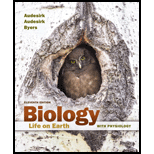
Concept explainers
To apply:
Heart-lung transplants are performed in some cases in which both organs have been damaged by cigarette smoking. Given a scarcity of organ donors, determine the criteria that would be used by an individual in selecting a recipient for such a transplant.
Introduction:
Smoking is inhalation and exhalation of burning cigarettes fumes containing tobacco. The smoke of cigarette tends to have a negative impact on the organs that are in direct contact of smoke as well as on the organs that are not in direct contact (as individuals inhale smoke present in the surrounding exhaled by smokers cigarette).
Explanation of Solution
Considering the problems involved in finding donor lungs and hearts (vital organs), they can be obtained from cadavers, except in the rare scenario of single lung donation. Choices must be made to decide who gets these organs. Smoking, being a serious addiction has been part of a massive public push for better part of 30 years.
Factors involved in making the decision to provide an available lung-heart pair to a recipient should include:
(i) Age of patient.
(ii) Commitment to quit smoking through either drug treatment or health program.
If an individual cannot commit to either of the programs then it could be simply waste of organ as the new organs will again be destroyed in a similar fashion.
The criteria that would be used by an individual in selecting a recipient for such a transplant include age and commitment to quit smoking by the patient.
Want to see more full solutions like this?
Chapter 34 Solutions
Biology: Life on Earth with Physiology Plus Mastering Biology with Pearson eText -- Access Card Package (11th Edition)
- What is the legal basis for lawsuits filed as a result of a transfusion? Question 5 options: a) Civil actions for tort and tort liability b) Criminal actions for tort and tort liability c) Civil actions for manslaughter d) None of the abovearrow_forwardUse the Eldon Card below to identify the blood type of this patient. What blood type(s) can this person donate blood to? In other words, what blood type(s) could receive blood from this patient? Select all that apply. A. O- b. AB+ c. B+ d. A- e. A+ f. AB- g. B- h. O+arrow_forwardWhich blood type would be a universal donor?arrow_forward
- Blood is a crucial component of the cardiovascular system. Beside each job, write which type of blood cell does that job. i. Carry Oxygen or food to your lungs. ii. Find germs. iii. Eats foreign things in your body. iv. Take Carbon Dioxide or waste away. v. Kill infections.What do you need to do to keep your heart healthy? Create a poster or brochure in which you describe the things a person can do to maintain good heart health.arrow_forwardExplain why a transplant might be dangerous to the health of a patient.arrow_forwardWhich of the following sequences shows the correct pathway of blood from body to lungs? body-superior and inferior vena cava-right atrium-tricuspid valve-right ventricle-pulmonary-semilunar valve-pulmonary trunk-pulmonary arteries-lungs body-superior and inferior vena cava-left atrium-tricuspid valve-left ventricle-aortic semilunar valve-pulmonary trunk-pulmonary arteries-lungs body-superior and inferior vena cava-right atrium-bicuspid valve-right ventricle-pulmonary-semilunar valve-pulmonary trunk-pulmonary veins-lungs body-superior and inferior vena cava-left atrium-tricuspid valve-left ventricle-pulmonary semilunar valve- pulmonary trunk-pulmonary arteries-lungsarrow_forward
- Which of the following statements is NOT correct about the umbilical cord? Select one: a. Preserving the baby’s umbilical cord can be useful to help a sibling who may need stem cell transplant. b. The amount of blood cells contained in the umbilical cord is too little to treat an adult for stem cell transplant. c. A baby’s umbilical cord can be used to treat the same baby, if they are born with blood disorders, such as leukemia. d. The umbilical cord blood cells are multipotent, not totipotent like embryonic stem cells.arrow_forwardCurrently, the news regarding ‘pig heart transplantation to humans’ has become a controversial issue in worldwide. This issue also is an advancement in cell/ tissue culture context. Based on this,please discuss about ethical issues that can be exist from this ‘pig heart transplantation to humans’.arrow_forwardCurrently, the news regarding ‘pig heart transplantation to humans’ has become a controversial issue in worldwide. This issue also is an advancement in cell/ tissue culture context. Based on this,please give me a conclusion paragraph from this ‘pig heart transplantation to humans’.arrow_forward
- You wanted to prepare a fish dish for your grandfather that he loves the dried salted Codfish. But you noticed that this might be causing a problem for your elder grandfather since he has hypertension, what would you do to remove the salt from the fish? (Answer with one word) What is the mechanism by which the salt gets out from the fish? (one word) * Please put a comma and space between the two answers word. Answer: add potatoes, Josmosis 0001 A Type here to search Chp f4 &arrow_forwardShould one person have a second transplant when the first one fails, or should a different person be given a first chance at a new organ?arrow_forwardCoumadin is an anticoagulant drug that is sometimes given to patients who have just suffered a deep vein thrombosis, a pulmonary embolism, a heart attack, or to patients with artificial heart valves. It helps reduce the chance of future clots and the further risk of embolism. The active ingredient in Coumadin is warfarin, a rat poison. How do you think the same compound can be used for these two very different purposes?arrow_forward
 Comprehensive Medical Assisting: Administrative a...NursingISBN:9781305964792Author:Wilburta Q. Lindh, Carol D. Tamparo, Barbara M. Dahl, Julie Morris, Cindy CorreaPublisher:Cengage Learning
Comprehensive Medical Assisting: Administrative a...NursingISBN:9781305964792Author:Wilburta Q. Lindh, Carol D. Tamparo, Barbara M. Dahl, Julie Morris, Cindy CorreaPublisher:Cengage Learning

